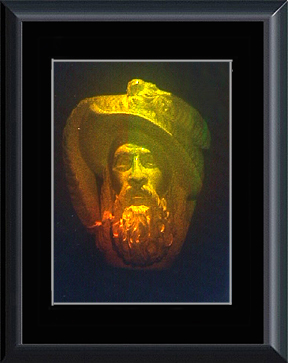At some time in the future it may be that three-dimensional holographic images will be transmitted directly into our homes, and we will see events taking place in our own living rooms. By then, the special effects that we currently admire and enjoy in movies will look very dated. It is not possible to do this at present. Indeed we are nowhere near having the technology to transmit holographic images into homes. Satellites, antenna, and every aspect of current communications technology will have to change and develop before three-dimensional images can be broadcast. However, it is very likely to happen.
Holography is currently used in a wide range of applications, but more uses will surely be found in the future. Current uses include:testing items such as automobile engines, aircraft tyres and artificial bones and joints. The type of holography used for such applications is known as interferometry, and the resulting hologram is called an interferogram;
 |
| Image by kind permission of Frank de Freitas |
- medical imaging, enabling doctors to see a three-dimensional CAT-scan and work within the holographic image to take measurements;
- creating simple and colourful holograms used on consumer packaging materials such as cereal and toothpaste boxes, as well as numerous other items;
- security applications for credit cards, and for identifying manufactured objects such as clothing and help reduce counterfeiting;
- Holographic Optica Elements (HOE's) used by aircraft pilots in so-called "head-up display" navigation systems. This technology allows pilots to keep their eyes on the sky or runway while still being able to read their instrumentation. Instrument readings appear to float in front of their cockpit window. Similar features are beginning to appear as options in automobiles;
- holographic lenses and contacts which can be used to provide several different functions, such as correcting regular vision and producing magnification for reading, within the entirety of a single lens;
- making life-like portraits of people, pets, etc;
- artistic expression of various types - artistic holography can now be seen in numerous galleries around the world;
-
magazine and book covers - those used by National Geographic and Sports Illustrated (Michael
Jordon) have been famous examples; - point-of-purchase advertising, where a hologram takes the place of a photograph of a product or service in a store or supermarket;
- data storage applications such as holographic hard drives. Using such technology, the entire contents of the Library of Congress can be stored in a volume the size of a sugar cube; and
- in the not too distant future, perhaps holographic television and motion pictures as mentioned earlier.






